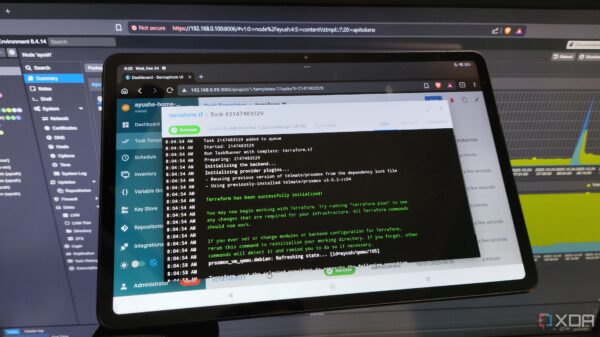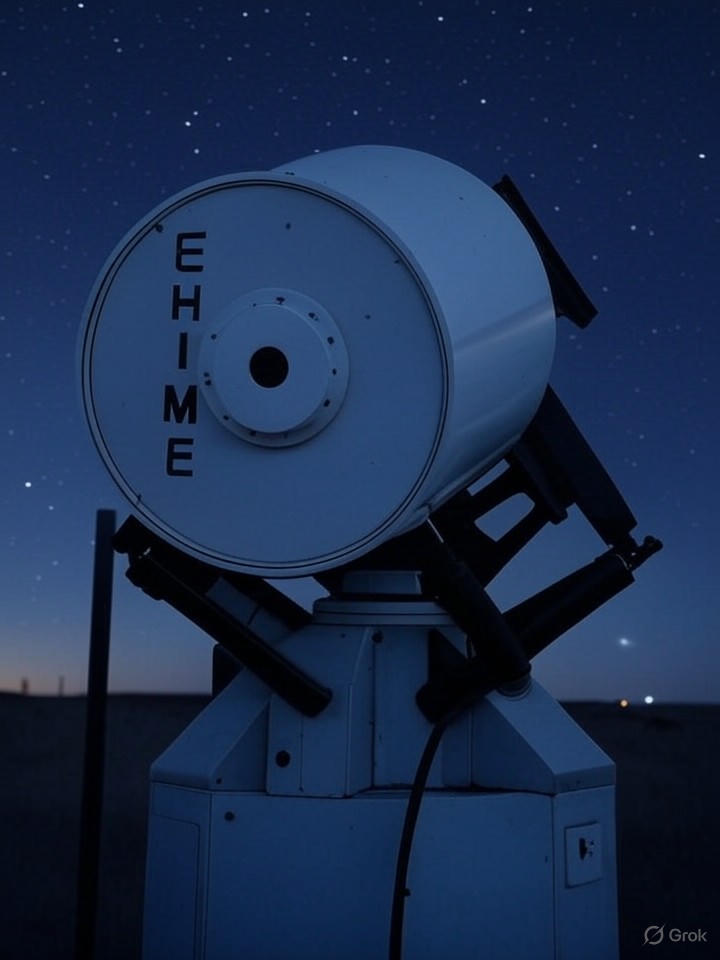In a groundbreaking discovery, the Canadian Hydrogen Intensity Mapping Experiment (CHIME) has detected the brightest fast radio burst (FRB) ever observed, named RBFLOAT, originating from the nearby spiral galaxy NGC 4141. This event, recorded in March 2025, challenges existing theories regarding the origins of these enigmatic cosmic phenomena, which emit intense bursts of radio waves lasting only milliseconds.
Since its launch in 2018, CHIME has transformed the landscape of FRB research. The telescope, situated in British Columbia, employs a unique design with four cylindrical reflectors, allowing it to scan vast areas of the sky each day. In its first year of operation, CHIME identified more than 500 FRBs, distinguishing between single events and repeating signals. This capability has provided significant insights into the diversity of mechanisms that may produce these bursts.
RBFLOAT: A Record-Breaking Discovery
RBFLOAT, an acronym for “Radio Brightest Flash of All Time,” stands out not only for its brightness but also for its origin within NGC 4141, approximately 130 million light-years away in the Ursa Major constellation. This relatively close proximity enables astronomers to study the burst in greater detail than previously possible. Unlike other FRBs typically traced back to distant galaxies, RBFLOAT’s location raises questions about the conventional theories linking these events to extreme cosmic environments, such as magnetars or black hole mergers.
Using CHIME’s upgraded outrigger stations, researchers achieved remarkable localization of the burst to within 13 parsecs. This level of precision is particularly noteworthy for a non-repeating FRB. Findings published in The Astrophysical Journal Letters and highlighted by the Dunlap Institute reveal that RBFLOAT originated in the outer regions of NGC 4141, far from the star-forming zones usually associated with such energetic bursts.
Implications for Astrophysics
The implications of RBFLOAT’s discovery are significant. Traditionally, magnetars—highly magnetized neutron stars—have been considered primary candidates for generating FRBs, especially following a 2020 event linked to a magnetar within our own Milky Way. However, the location of RBFLOAT within an older, quiescent stellar population defies this model, as magnetars are typically found in younger galactic regions resulting from recent supernovae.
A researcher commented in Berkeley News that the burst’s unexpected location suggests alternative progenitors, such as colliding neutron stars or unique white dwarf phenomena. The one-off nature of RBFLOAT also contrasts with repeating FRBs, which could indicate different underlying processes. Excitement among astronomers and space agencies, including the Canadian Space Agency, has been palpable on social media, highlighting the potential for CHIME to redefine our understanding of FRBs and their origins.
CHIME’s achievements stem from robust international collaboration, involving esteemed institutions such as the University of Toronto, McGill University, and MIT. Recent enhancements, including additional outriggers in California and West Virginia, have refined the telescope’s triangulation capabilities. Reports from Green Bank Observatory illustrate how these improvements not only localized RBFLOAT but also enhance future FRB mapping efforts, potentially revealing their energy sources.
As researchers look ahead, integrating data from observatories like the James Webb Space Telescope could further enrich our understanding by identifying optical counterparts to these radio bursts. A prominent researcher noted on social media that this discovery challenges existing magnetar theories, prompting the need for reevaluation of cosmic radio signal classifications.
The broader implications of FRBs extend beyond their origins; they serve as probes of cosmic phenomena. Their dispersion through intergalactic plasma offers insights into the universe’s missing baryons, crucial for models of cosmic evolution. The clearer signal from RBFLOAT, an event closer to Earth, is less distorted by intervening matter, allowing scientists to gain a better understanding of these bursts’ energetic characteristics.
As discussions around RBFLOAT continue, questions remain: What accounts for its extraordinary brightness? Is it an isolated event or indicative of a new subclass of FRBs? Ongoing observations by CHIME, along with collaborative global efforts, may soon unravel these mysteries, reshaping our comprehension of extreme astrophysics.
For the scientific community, RBFLOAT represents a pivotal moment. With reports indicating over a thousand FRBs identified to date, emerging patterns reveal some originating from “dead” galaxies while others exhibit rhythmic repetition. The case of RBFLOAT, as detailed in News@York, underscores the urgency for diverse models to explain these phenomena. As research advances, FRBs may not only illuminate dark matter distributions but also lead to new discoveries in exotic physics. RBFLOAT thus serves as a guiding light, steering astronomers toward deeper answers in the vast, radio-lit expanse of space.








































































